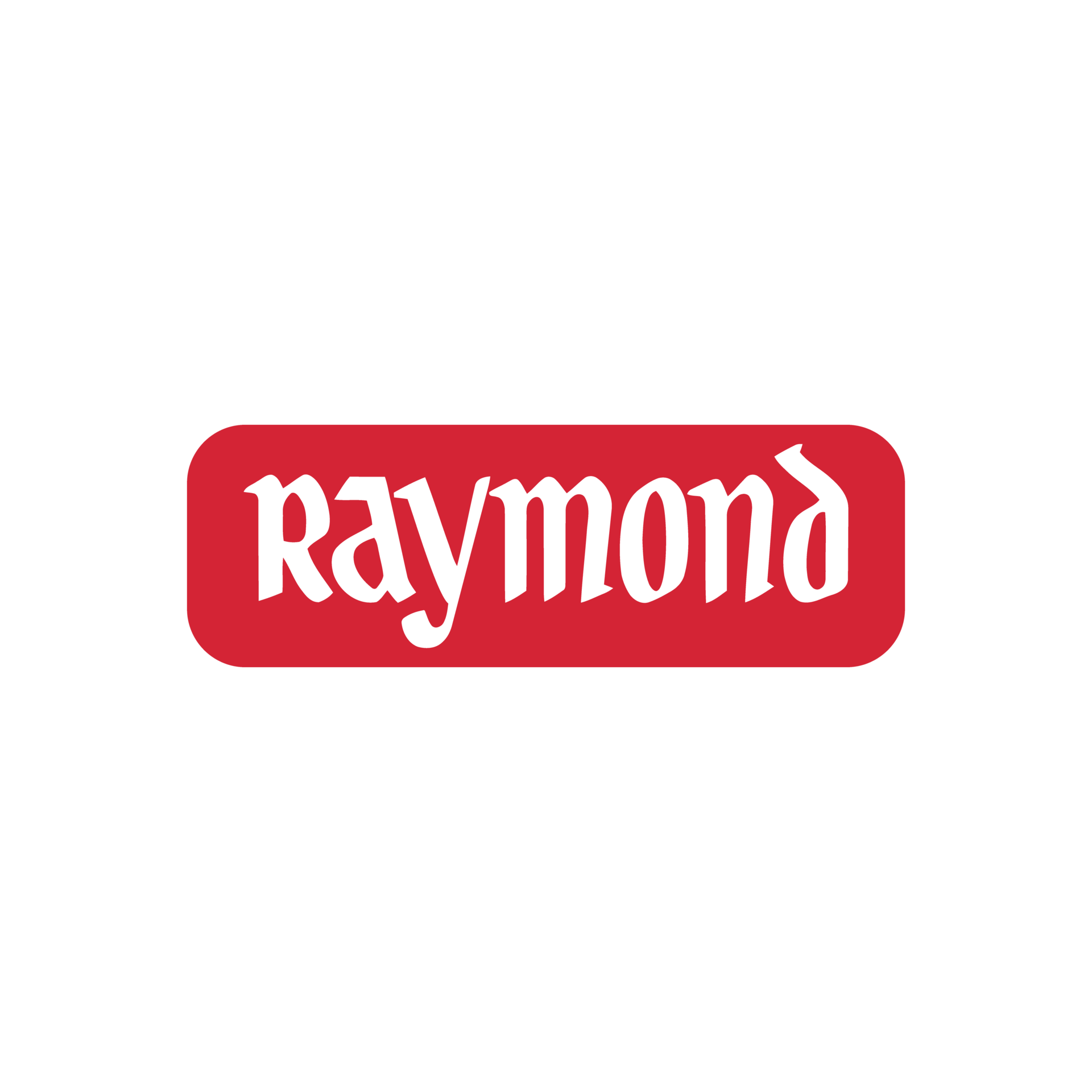Raymond Reach Truck Training: Your Comprehensive Guide to Safe and Efficient Operation sale.truckstrend.com
In the bustling world of warehousing, logistics, and manufacturing, the efficient and safe movement of goods is paramount. Among the diverse fleet of material handling equipment, the Raymond Reach Truck stands out as a highly specialized and indispensable machine. Designed for navigating narrow aisles and reaching impressive heights, it optimizes storage space and enhances productivity. However, the unique operational characteristics of a reach truck demand specific skills and knowledge that can only be acquired through comprehensive Raymond Reach Truck Training. This article serves as an in-depth guide, exploring every facet of this crucial training, from its foundational importance to practical advice and common queries, ensuring operators are equipped to handle these powerful machines safely and effectively.
Understanding the Raymond Reach Truck
Raymond Reach Truck Training: Your Comprehensive Guide to Safe and Efficient Operation
Before delving into the training itself, it’s essential to grasp what distinguishes a Raymond Reach Truck from other forklifts. Unlike a traditional counterbalance forklift that carries its load in front, a reach truck "reaches" its forks out to pick up or deposit a load, then retracts the load back within its wheelbase for stability during travel. This design allows for incredibly tight turning radii and the ability to operate efficiently in very narrow aisles (VNAs), often as small as 8-10 feet, maximizing storage density in warehouses.
Key components include the mast, which extends vertically and horizontally (the "reach" mechanism); the outriggers, which provide stability; the battery compartment, often forming a significant part of the counterweight; and the operator’s compartment, designed for stand-up operation to facilitate quick entry and exit. Raymond Corporation is a leading manufacturer of these sophisticated machines, renowned for their innovation, reliability, and advanced control systems, which further underscore the need for specialized training tailored to their specific designs and functionalities.
The Indispensable Importance and Profound Benefits of Raymond Reach Truck Training
Operating any heavy machinery carries inherent risks, but the specialized nature of a reach truck amplifies the need for expert training. The consequences of improper operation can range from minor product damage to severe injuries or even fatalities. Comprehensive Raymond Reach Truck Training is not merely a regulatory requirement; it’s an investment that yields significant dividends in safety, efficiency, and overall operational excellence.
Safety: The Foremost Priority
The primary benefit of robust training is enhanced safety. Operators learn to understand the stability triangle, load capacity limits, and the dynamics of a high-reaching, narrow-aisle vehicle. Training covers critical aspects like:
- Accident Prevention: Minimizing tip-overs, collisions with racks or personnel, and dropped loads.
- Injury Reduction: Teaching correct operating procedures to prevent strains, falls, and impacts.
- Pedestrian Safety: Emphasizing awareness of surroundings and protocols when operating near foot traffic.
- Compliance: Ensuring adherence to occupational safety regulations such as OSHA 1910.178 (Powered Industrial Trucks) in the United States, or CSA B335-15 in Canada, which mandate specific training and certification for all powered industrial truck operators.

Efficiency and Productivity Gains

A well-trained operator is a more efficient operator. They can:
- Optimize Material Flow: Navigate narrow aisles with precision, retrieve and place loads faster and more accurately.
- Reduce Product Damage: Handle goods with care, minimizing costly breakages or damage to inventory.
- Minimize Equipment Downtime: Proper operation reduces wear and tear, extending the lifespan of the reach truck and cutting maintenance costs.
- Boost Workflow: Contribute to a smoother, more organized, and ultimately more productive warehouse environment.

Regulatory Compliance and Risk Mitigation
Failing to train and certify operators can lead to hefty fines, legal liabilities, and even the shutdown of operations. Comprehensive training ensures that your organization meets all legal requirements, mitigating the risks associated with non-compliance. It also demonstrates a commitment to a safe working environment, which can positively impact insurance premiums and company reputation.
Operator Competence and Confidence
Training instills a deep understanding of the equipment’s capabilities and limitations, fostering confidence in the operator. Confident operators are less prone to errors, make better decisions, and are more comfortable handling diverse tasks. This competence translates into reduced stress for the operator and a more reliable workforce for the employer.
What Does Raymond Reach Truck Training Entail? A Detailed Curriculum
A comprehensive Raymond Reach Truck Training program is typically divided into two core components: theoretical (classroom) instruction and practical (hands-on) application, culminating in an evaluation.
1. Theoretical (Classroom) Component
This foundational segment provides operators with the essential knowledge base required for safe and effective operation. Topics typically include:
- Introduction to Reach Trucks: Understanding different types, components, and their unique characteristics.
- Stability Principles: In-depth study of the stability triangle, load center, load capacity charts, and how various factors affect stability.
- Pre-Operational Checks (Daily Inspections): A crucial segment detailing how to perform thorough inspections before each shift to identify potential mechanical issues.
- Safe Operating Procedures: Covering rules for traveling (forward/reverse), turning, lifting, lowering, loading, and unloading. This includes proper speed, maintaining safe distances, and avoiding sudden movements.
- Hazard Identification: Recognizing and avoiding common workplace hazards such as uneven surfaces, blind spots, overhead obstructions, and pedestrian traffic.
- Battery Care and Charging: Safe handling of industrial batteries, proper charging techniques, and maintenance to prolong battery life and prevent acid spills or explosions.
- Relevant Regulations: A review of applicable local, national, and industry-specific safety standards (e.g., OSHA, CSA).
- Emergency Procedures: What to do in case of tip-overs, mechanical failures, or other emergencies.
2. Practical (Hands-on) Component
This is where theoretical knowledge is applied in a controlled environment under the supervision of a certified instructor. This segment is critical for developing the motor skills and muscle memory necessary for proficient operation. It typically includes:
- Familiarization: Getting acquainted with the specific Raymond Reach Truck model, its controls, gauges, and safety features.
- Pre-Shift Inspection Practice: Hands-on practice performing the daily inspection.
- Basic Maneuvering: Learning to start, stop, steer, and reverse smoothly.
- Load Handling: Practice picking up, transporting, and depositing various loads at different heights, focusing on proper fork positioning and load stability.
- Navigating Obstacles: Operating in simulated narrow aisles, around corners, and through doorways, mimicking real-world warehouse conditions.
- High-Level Stacking/Retrieval: Practicing placing and retrieving loads from elevated racking, emphasizing precision and safety protocols at height.
- Battery Charging Practice: Hands-on demonstration and practice of safe battery changing/charging procedures.
- Simulated Emergency Drills: Practicing what to do in various emergency scenarios.
3. Evaluation and Certification
At the conclusion of both theoretical and practical training, operators undergo an evaluation. This typically involves a written test to assess their understanding of safety principles and regulations, and a practical driving test to demonstrate their proficiency in operating the reach truck safely and efficiently. Upon successful completion, the operator receives a certification, which is often valid for a specific period (e.g., three years), after which refresher training is required.
Choosing the Right Raymond Reach Truck Training Program
Selecting a high-quality training program is crucial. Consider the following factors:
- Accreditation and Compliance: Ensure the training provider is recognized and their curriculum meets or exceeds national and local safety standards (e.g., OSHA, CSA).
- Instructor Qualifications: Look for instructors who are not only certified but also possess extensive real-world experience operating Raymond Reach Trucks and are skilled educators.
- Training Environment: The practical training area should be realistic, safe, and equipped with modern Raymond Reach Trucks that the operators will actually use.
- Customization: Some providers offer on-site training tailored to your specific warehouse layout, racking systems, and equipment, which can be highly beneficial.
- Refresher Training: Inquire about options for periodic refresher training, which is mandatory and essential for maintaining operator proficiency.
- Reputation and Reviews: Check testimonials and references from other businesses or individuals who have used their services.
Practical Advice for Successful Raymond Reach Truck Operation (Post-Training)
Even after certification, continuous vigilance and adherence to best practices are vital for safe and efficient operation.
- Always Perform Pre-Shift Inspections: This cannot be overstressed. A quick check can prevent accidents and costly breakdowns.
- Adhere Strictly to Load Capacities: Never overload the reach truck. Understand and respect the load capacity chart for different heights and load centers.
- Maintain a Safe Speed: Speed is a major contributor to accidents. Always operate at a speed that allows you to stop safely and maintain full control.
- Be Aware of Your Surroundings: Constantly scan for pedestrians, other equipment, blind spots, and overhead obstructions. Use the horn when approaching intersections or blind corners.
- Use Proper Battery Charging Techniques: Follow all safety protocols when handling batteries, including wearing PPE and ensuring proper ventilation.
- Report Issues Promptly: Any mechanical issues, even minor ones, should be reported immediately for repair. Do not operate a faulty machine.
- Continuous Learning: Stay updated on new safety protocols, equipment features, and best practices. Participate in refresher training as required.
Challenges and Solutions in Reach Truck Operation
While highly efficient, reach trucks present unique operational challenges that skilled operators learn to manage.
- Limited Visibility: Especially when operating at high heights or with bulky loads, visibility can be restricted.
- Solution: Proper training emphasizes looking in the direction of travel, using mirrors, and utilizing auxiliary cameras where available. Always ensure clear line of sight.
- Operating in Very Narrow Aisles (VNAs): The very advantage of a reach truck can also be a challenge, requiring extreme precision.
- Solution: Extensive practical training in VNA environments, slow and controlled movements, and strict adherence to aisle rules. Some modern reach trucks feature auto-guidance systems to assist.
- Battery Management: Industrial batteries are heavy, require specific charging procedures, and can pose chemical hazards.
- Solution: Thorough training on battery safety, dedicated charging stations, proper PPE, and scheduled battery rotation/maintenance.
- Operator Fatigue: Stand-up operation for extended periods can lead to fatigue.
- Solution: Regular breaks, ergonomic considerations in the operator compartment, and ensuring operators are well-rested before shifts.
- Dealing with Damaged Racking or Pallets: Operating with damaged infrastructure or unstable loads is extremely dangerous.
- Solution: Strict protocols for reporting and rectifying damaged racking, immediate removal of damaged pallets, and refusing to handle unstable loads.
Raymond Reach Truck Training Price Table (Estimated Ranges)
The cost of Raymond Reach Truck training can vary significantly based on location, provider, group size, and whether the training is public or on-site. The table below provides estimated price ranges for different training types.
| Training Type | Description | Estimated Price Range (USD) | Key Factors Influencing Price |
|---|---|---|---|
| Public Course (Individual) | Open enrollment, typically held at the training provider’s facility. Best for individual operators. | $250 – $600 per person | Duration (1-2 days), inclusion of certification, location. |
| On-Site Training (Group) | Trainer comes to your facility, uses your equipment. Ideal for training multiple employees. | $1,000 – $3,000 per day | Number of trainees, travel costs, customization needs, equipment availability. |
| Refresher Training (Individual) | Shorter course for already certified operators, typically every 2-3 years. | $150 – $350 per person | Duration (half-day to full day), certification renewal. |
| Refresher Training (Group) | On-site refresher for multiple operators. | $700 – $1,800 per day | Number of trainees, travel costs. |
| Advanced/Specialized Modules | Training for specific attachments, highly complex operations, or unique warehouse environments. | $400 – $800 per person | Specificity of content, duration. |
| Online Theory Component | Self-paced online module covering theoretical aspects (often combined with practical). | $50 – $150 per person | Platform quality, content depth. |
Note: These are estimated ranges and actual prices may vary. It’s always best to obtain quotes directly from certified training providers.
Frequently Asked Questions (FAQ) About Raymond Reach Truck Training
Q1: How long does Raymond Reach Truck training typically take?
A1: A comprehensive initial certification course usually takes 1 to 2 full days, depending on the operator’s prior experience and the depth of the curriculum. Refresher training is generally shorter, lasting a few hours to a full day.
Q2: Is Raymond Reach Truck certification mandatory?
A2: Yes, in most countries (including the U.S. and Canada), it is a legal requirement for anyone operating a powered industrial truck, including a Raymond Reach Truck, to be trained and certified by a qualified person. This ensures compliance with safety regulations like OSHA 1910.178.
Q3: How often do I need refresher training for a reach truck?
A3: Regulations typically mandate refresher training every three years. However, refresher training may also be required sooner if an operator is involved in an accident, observes unsafe operation, receives a poor evaluation, or operates a different type of powered industrial truck.
Q4: Can I operate other types of forklifts after completing Raymond Reach Truck training?
A4: Not necessarily. While some principles are transferable, each type of powered industrial truck (e.g., counterbalance, order picker, rough terrain forklift) has unique operating characteristics. You must receive specific training and certification for each type of equipment you intend to operate.
Q5: What are the prerequisites for Raymond Reach Truck training?
A5: Typically, operators must be at least 18 years old. A basic understanding of English (for instructions and safety manuals) and good physical health (including vision and hearing) are also usually required. Some providers may require a valid driver’s license.
Q6: What happens if I fail the training test or practical evaluation?
A6: Most reputable training providers will offer opportunities for re-testing or additional coaching to help you meet the required standards. The goal is to ensure you are competent and safe, not just to pass a test.
Q7: Is online-only Raymond Reach Truck training sufficient for certification?
A7: No. While online courses can provide the theoretical knowledge, they cannot replace the mandatory hands-on practical training and evaluation. OSHA and similar regulatory bodies require both theoretical and practical components for full certification.
Conclusion
Raymond Reach Truck Training is far more than a mere formality; it is the cornerstone of a safe, efficient, and compliant material handling operation. By investing in comprehensive, high-quality training, organizations safeguard their personnel, protect valuable assets, and optimize their logistical processes. For the individual operator, it translates into enhanced job security, increased confidence, and the satisfaction of mastering a powerful and indispensable piece of equipment. As warehouses continue to evolve with demands for greater density and speed, the skilled Raymond Reach Truck operator, forged through rigorous training, will remain an invaluable asset, driving productivity while upholding the highest standards of safety.
![]()



